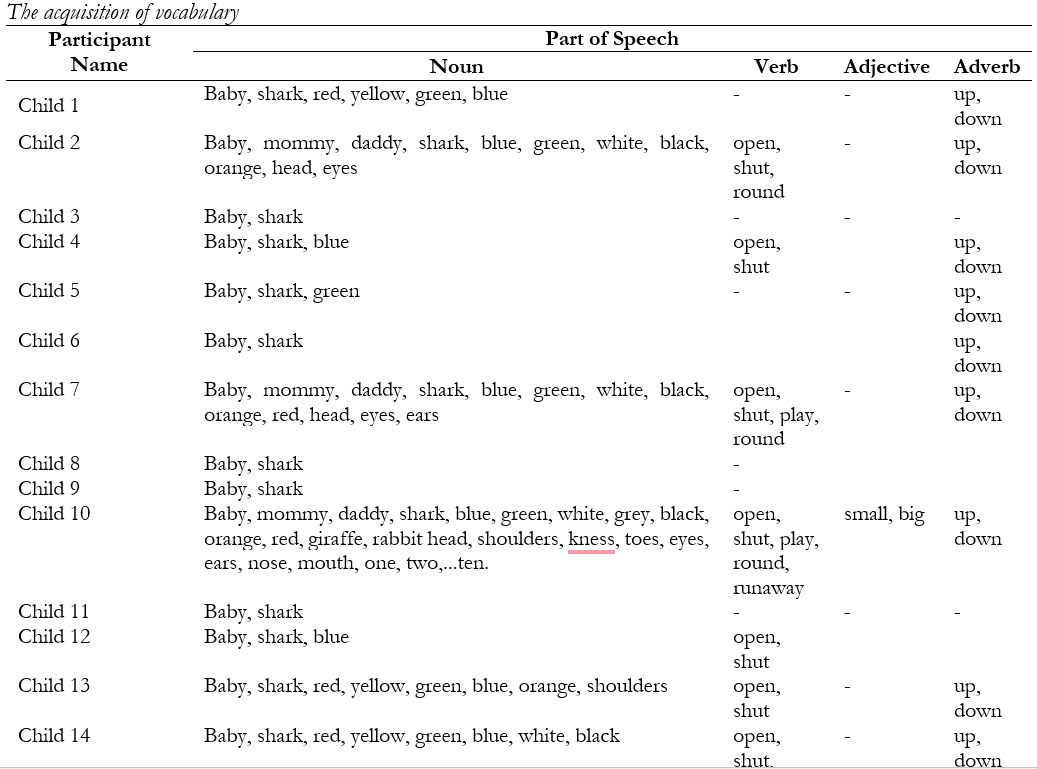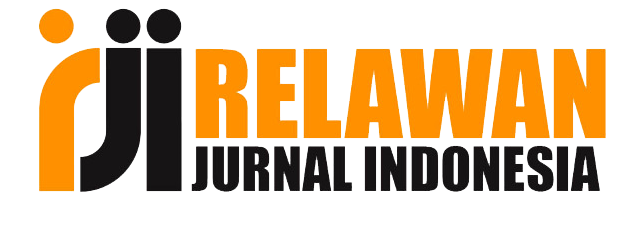A study of early childhood English language development as an impact of English cartoons
DOI:
https://doi.org/10.33474/j-reall.v5i1.21302Keywords:
billingualism, early childhood, English cartoons, English development, language acquisitionAbstract
In this sophisticated era, technological advances have contributed to the phenomenon of bilingualism. Easy access to various content on the internet and social media has a new impact on the language acquisition of an individual, including children. Children are active users who access digital content, including English cartoons. Research conducted by Trota et al. (2022) and Alghonaim (2019) shows a significant effect of English cartoons on children's English language acquisition. Departing from this, the researcher conducted further research on similar influences on children who had mastered two languages before being exposed to English cartoons. Data was collected through direct observation and interviews with parents of participants. The research was conducted in Sarabau village, Plered sub-district, Cirebon district, with children aged 5 to 6 years as the object of research. The data was then carefully analyzed using a qualitative descriptive method. The results showed an influence on the acquisition of sound systems, vocabulary, and sentence formation in English. In line with this, researchers also found factors such as the intensity of screen time and the role and involvement of parents in the process of English language acquisition through English cartoons.
References
Alghonaim, A. S. (2019). Impact of watching TV English cartoons on EFL language acquisition: A case study of an Arabic young child. Arab Journal for Scientific Publishing (AJSP) , 12, 23–54. www.ajsp.net
Alghonaim, A. S. (2020). Impact of watching cartoons on pronunciation of a child in an EFL setting: A comparative study with problematic sounds of EFL learners. Arab World English Journal, 11(1), 52–68. https://doi.org/10.24093/awej/vol11no1.5
Anggrasari, A. P., Rahagia, R., Profesi, P., Stikes, N., Alamat, S., Prodi, K. :, Ners, P., Medokan, J., & Surabaya, S. (2020). The effect of gadget use with speech and language development in child ages 3 until 5 years old. Indonesian Journal of Professional Nursing, 1(1).
Asgari, A., & Mustapha, G. (2011). The influence of informal language learning environment (parents and home environment) on the vocabulary learning strategies. English Language and Literature Studies, 1(1), 7–13. https://doi.org/10.5539/ells.v1n1p7
Chaer, A., & Agustina, L. (2010a). Sosiolinguistik Perkenalan Awal (Revisi). PT. Rineka Cipta.
Chaer, A., & Agustina, L. (2010b). Sosiolinguistik Perkenalan Awal (Revisi). PT. Rineka Cipta.
Ermawati, N., & Mahmudah, S. (2015). Pengaruh film animasi terhadap perkembangan berbicara anak. Jurnal Ilmiah Pendidikan Anak Usia DIni, 4(2), 1–6.
Ghilzai, S. A., & Alam, R. (2017). Impact of cartoon programs on children’s language and behavior. www.sienajournals.com
Ghilzai, S. A., Alam, R., AHmad, Z., Shaukat, A., & Noor, S. S. (2017). Impact of cartoon programs on children’s language and behavior. Insights in Language Society and Culture, 2(1), 104–126. www.sienajournals.com
Martinot, P., Bernard, J. Y., Peyre, H., De Agostini, M., Forhan, A., Charles, M. A., Plancoulaine, S., & Heude, B. (2021). Exposure to screens and children’s language development in the EDEN mother–child cohort. Scientific Reports, 11(1). https://doi.org/10.1038/s41598-021-90867-3
Meng, Q., Sheng, X., Zhao, J., Wang, Y., & Su, Z. (2020). Influence of mothers/grandmothers co-viewing cartoons with children on children’s viewing experience. Frontiers in Psychology, 11. https://doi.org/10.3389/fpsyg.2020.01232
Pempek, T. A., Kirkorian, H. L., & Anderson, D. R. (2014). The effects of background television on the quantity and quality of child-directed speech by parents. Journal of Children and Media, 8(3), 211–222. https://doi.org/10.1080/17482798.2014.920715
Safwat, R. F., & Sheikhany, A. R. (2014). Effect of parent interaction on language development in children. Egyptian Journal of Otolaryngology, 30(3), 255–263. https://doi.org/10.4103/1012-5574.138488
Sundayra, L. (2017). Proses akuisisi bahasa pada anak: Kajian teoretis mutakhir. Kibas cenderawasih: Jurnal Ilmiah Kebahasaan & Kesastraan, 14(2), 169–178.
Tobias, J. M. (n.d.). English cartoon and home language on the listening and speaking skills of pre-schoolers. Retrieved April 24, 2024, from https://www.academia.edu/25109345/English_Cartoon_and_Home_Language_on_the_Listening_and_Speaking_Skills_of_Pre_Schoolers?source=swp_share
Trota, M. P. B., Cabeltis, C. B., Cadiente, N. T., Ligan, M., Asoy, N. M. C., & Bardaje, Z. L. (2022). The influence of watching English cartoons on English language acquisition: a case of selected Filipino preschoolers. JELITA: Journal of Education, Language Innovation, and Applied Linguistics, 1(2), 105–124. https://doi.org/10.37058/jelita.v1i2.5249
Yusnia, S. E. A., Sumaryoto, & Sumaryati. (2022). Bilingualisme dan multilingualisme dalam masyarakat kabupaten Subang. Diskursus: Jurnal Pendidikan Bahasa Indonesia, 5(1), 12530. https://doi.org/10.30998/diskursus.v5i1.12795

Downloads
Published
How to Cite
Issue
Section
License
Copyright (c) 2024 Dinda Syifa Saiddina, Virga Putra Darma

This work is licensed under a Creative Commons Attribution 4.0 International License.
Authors who publish this journal agree to the following terms:
- Authors retain copyright and grant the journal right of first publication with the work simultaneously licensed under a Creative Commons Attribution License that allows others to share the work with an acknowledgement of the work's authorship and initial publication in this journal.
- Authors can separately make additional contractual arrangements for non-exclusive distribution published by the journal (e.g., publish it in a book), with an acknowledgement of its initial publication in this journal.
- Authors are allowed and encouraged to send their work via online (e.g., in the institutional repositories or their website) after published by the journal.





















